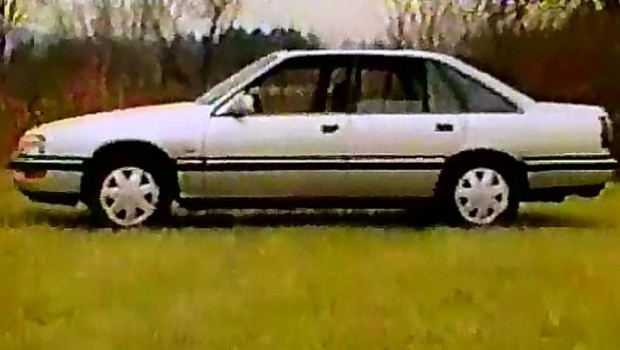Opel

Published on January 23rd, 2012 |
by BajaBusta
1988 Opel Omega & Senator Preview Test Drive

Bob Stempel, the President of General Motors, had a warm place in his heart, for his Alma mater, Adam Opel AG. If Stempel had any say in it, GM would have resurrected the Opel bran in the U.S. – not on a line of low priced Japanese subcompacts this time (like the abortive Opel by Isuzu effort), but on a series of higher priced luxury/sport sedans imported directly form its West German subsidiary.
Stempel, the one-time general manager of Pontiac, Chevy and Opel who succeeded Jim McDonald as President of GM, scotched rumors that one or both Opel models might be sold through one of GM’s domestic passenger-car divisions, perhaps Cadillac (Catera) or Oldsmobile. In the Sixties and Seventies, import that wore the Opel brand name were marketed in the U.S. by Buick dealers.
The thinking was to relaunch the marque as a quality German brand through a separate franchise arrangement with existing GM dealers in the same vein as Ford’s upscale Merkur line. The competitors would include comparable sedans from Mercedes-Benz, BMW, Audi, Volvo, Saab, Peugeot and Jaguar and the new upscale luxury/sport sedans from Honda, Toyota and Nissan.
Individual bids by Porsche and American Isuzu to sell Opel products in the U.S. were met with quiet, but firm resistance from GM.
Tags: 1988, General Motors, German, Germany, GM, Motorweek, Opel Omega, Opel Senator, Preview, Review, road test, Roadtest, test drive, Testdrive



Opel models did come back to the U.S but were sold under other GM badges:
-Opel Omega>Cadillac Catera
-Opel Vectra>Saturn L-series
-Opel Astra>Saturn Astra
-Opel Antara>Saturn Vue(2nd generation) & Chevrolet Captiva
-Opel Insignia>Buick Regal(2010-present)
If only the video quality was as good as the test drive, or the cars themselves.